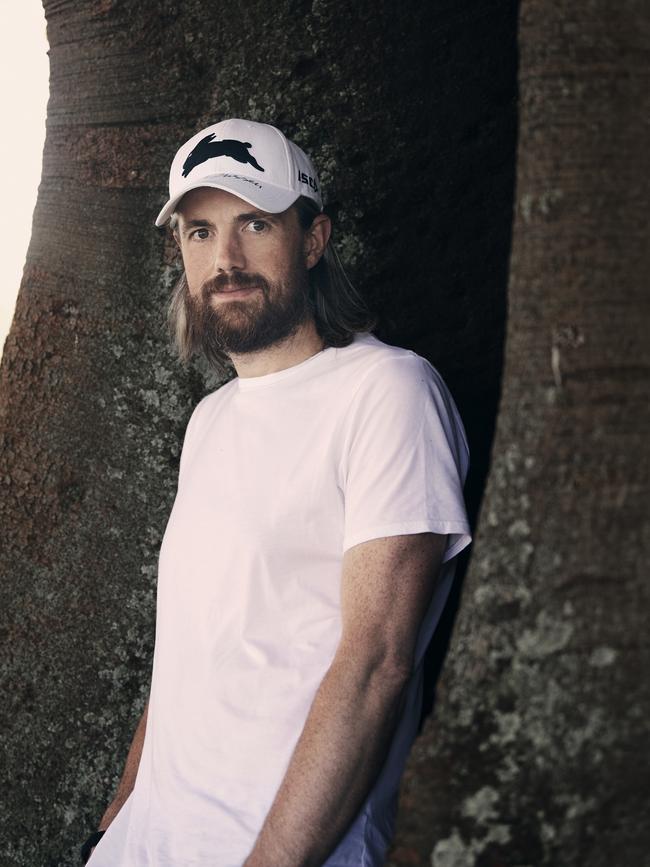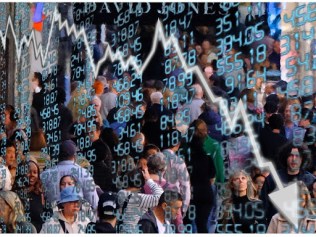
Philip Lowe has asserted the Reserve Bank’s total independence from Canberra with a full-bodied 25 basis point hike to the cash rate target and a warning to whoever wins the election in three weeks there will be plenty more to come.
The RBA boss has finally joined the rush of global central banks to turn off the massive stimulus tap that, combined with supply chain shocks, has spurred on the biggest inflationary shock seen in decades.
Dr Lowe was painting Tuesday’s move to lift the cash rate target to 0.35 per cent as an unashamedly positive step: It is an economy no longer needing the extraordinary life support seen through Covid.
“We don’t need these emergency settings any more,” Dr Lowe says.
Indeed is an economy growing quickly with near record low unemployment and strong household and business balance sheet.
And Commonwealth Bank’s Matt Comyn was quick to endorse this thinking by moving at lightening speed as he hit his millions of variable rate mortgage customers with the full 25 basis point hike. ANZ and Westpac soon followed with a similar hike. National Australia Bank joined the pack early Wednesday.
But make no mistake, the real motive of Tuesday’s RBA decision is to fight Australia’s worrying inflation which is running 3.7 per cent in underlying terms and is now getting away.
“The evidence that we have received on inflation…has been clear. Inflation has been high. It’s been higher than we’re expecting,” Dr Lowe says.
The move signals the beginning of Australia returning to a more “normal” economy with 25 basis point shift being the standard of rate moves over the past two decades. Even so, many analysts had expected a more of a gentle tap and were tipping with the RBA to lift the cash rate by 15 basis points.
The world has shifted since the RBA last issued its more modest inflation forecasts in February. The war on Ukraine is driving up oil and coal prices to new highs while China’s Covid relapse is putting further pressure on supply chains.
The RBA now expects underlying inflation of around 4.75 per cent by the end of this year, before moderating to around 3 per cent by mid-2024. These forecasts are based on an assumption of more rate rises to come.
Earlier, Macquarie Group chief executive Shemara Wikramanayake told the investment bank’s conference that rising global tensions have “reintroduced uncertainty” in world markets. She believes inflation has settled in to become broad based in Australia. Mirvac boss Susan Lloyd Hurwitz, also speaking at the Macquarie Australia conference the office and residential property developer is seeing cost increases in Sydney and Melbourne running at between 2 per cent to 4 per cent.
The reality is Tuesday’s interest rate rise in itself will be felt at the margins but the speed of future increases and the central bank’s ability to cool inflation will be what borrowers need to keep check on.
Prime Minister Scott Morrison has spent the past week distancing his government from possible interest rate rise, pointing out it was the RBA’s decision about where the nation is in its journey out of the pandemic. Labor meanwhile, is seeking to keep the focus of the election in coming weeks on cost of living pressures.
For his part Dr Lowe says the election or politics played no role in the central bank’s decision.
“We take our decisions in the best interests of the country. And that’s what we always do”.
Catch-up game
For Australians, perspective is key. The cash rate target is moving from almost nothing (0.1 per cent) to ultra-low levels (0.35 per cent). Before the pandemic, the cash rate was 0.75 per cent.
It still puts Australia’s cash rate target a long way behind other countries, (New Zealand is currently at 1.5 per cent) but it could accelerate quickly with economists tipping the cash rate to reach as much as 2 per cent by the end of the year.
Australia’s “neutral” cash rate during normal times is seen at around 2.5 per cent.
The last time Australia’s rate was 2 per cent was in early 2016, suggesting the RBA has been expansionary for the past eight years. However the risk is this very rapid path to returning to 2 per cent which will no doubt weigh on housing prices.
Still, consumers risk seeing their savings eroded quicker by inflation than the expected impact of this interest and future rate rises. Businesses are feeling the pinch of higher wage demands as well as rising input costs all which are being passed on to customers.
Banks have already repriced new fixed mortgages in line with money markets and now borrowers that have stuck with variable loans should brace for rises. CBA and ANZ set the tone hiking just hours after the RBA decision.
This cycle of rising interest rates will come as a shock to the millions of Australians who have taken out a cheap mortgage during the pandemic.
Now the same borrowers will be sweating that inflation doesn’t get away from current expectations because that’s when the real pain of future interest rate rises and really tough medicine will come.
AGL’s future fight
The battle for the future for AGL now moves from the headlines to the hustings, with tech billionaire Mike Cannon-Brookes claiming he is gaining support among the electricity generator’s big shareholders to derail next month’s planned vote to split the company.
If the momentum is real and the demerger support starts becoming a line ball call, it will force AGL chairman Peter Botten to shelve the planned split. Such a move would represent a major loss of confidence in the board and key management, potentially triggering turmoil in the boardroom.
AGL’s share register is wide open, although institutions make up more than 50 per cent of its total holdings. Substantial holders include green tinged index funds BlackRock (6.1 per cent) and Vanguard (6 per cent). Add to this Cannon-Brookes’ 11.3 per cent and the numbers start getting compelling.
AGL says it remains on track to holding the vote next month with a scheme document to be sent to shareholders shortly.

The planned split would see the heavy-polluting coal-fired power plants split from its renewables and electricity retailing. But Cannon-Brookes argues this would substantially weaken the company and make it much harder for the power generation business to quickly transition away from coal.
The billionaire says he has received support among big shareholders to keep the company together with the demerger “incredibly unpopular”. This could put him closer to securing the more than 25 per cent of shares needed to derail the split.
“Certainly, if you look around, talk to the big shareholders. It’s not very popular, right. From a shareholder point of view, they’re pretty pissed off they’ve lost a lot of money over the years”.
“Secondly, any shareholder with an ESG (environmental, social, governance) bent will quite clearly be far worse off. It’s quite clear that the demerger was already largely unpopular among big shareholders, especially the big index funds and other large shareholders who have pretty strict ESG credentials around what they can invest in”.

Cannon-Brookes said he is “putting my money where my mouth is” when it comes to pressuring AGL to exit coal early. He is funding a proxy campaign which will also target retail investors.
He likened the vote to holding an election but with only one choice on the ballot.
“We are trying to make clear to the market that financially from a shareholder perspective and from all the other stakeholder perspectives, there is a choice. This is not a foregone conclusion. This is not a case of you only choose Option A and that’s it.
“The thing is there’s many more options. And I think keeping a company together makes far more sense for the shareholders.”
johnstone@theaustralian.com.au



